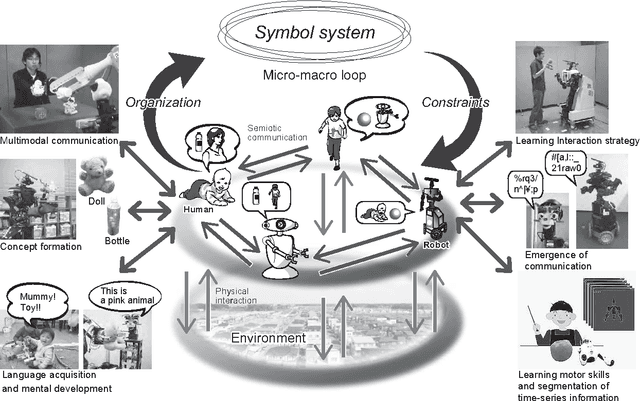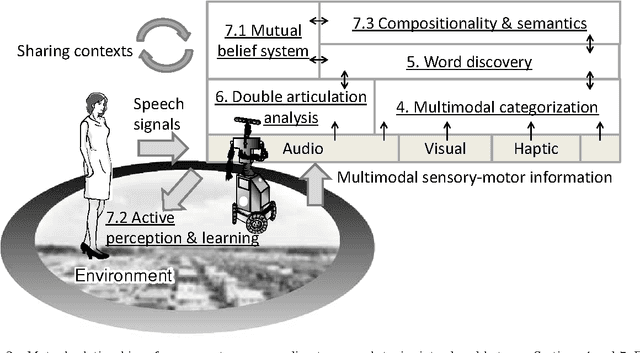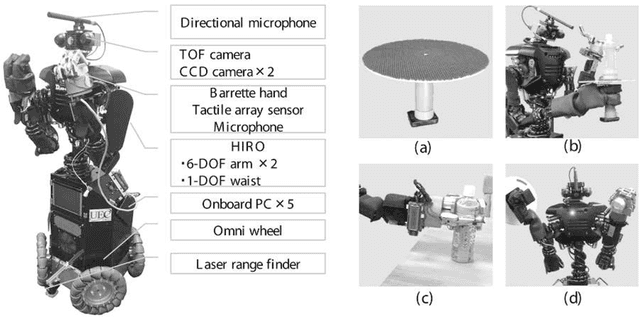Naoto Iwahashi
Symbol Emergence in Cognitive Developmental Systems: a Survey
Jul 11, 2018



Abstract:Humans use signs, e.g., sentences in a spoken language, for communication and thought. Hence, symbol systems like language are crucial for our communication with other agents and adaptation to our real-world environment. The symbol systems we use in our human society adaptively and dynamically change over time. In the context of artificial intelligence (AI) and cognitive systems, the symbol grounding problem has been regarded as one of the central problems related to {\it symbols}. However, the symbol grounding problem was originally posed to connect symbolic AI and sensorimotor information and did not consider many interdisciplinary phenomena in human communication and dynamic symbol systems in our society, which semiotics considered. In this paper, we focus on the symbol emergence problem, addressing not only cognitive dynamics but also the dynamics of symbol systems in society, rather than the symbol grounding problem. We first introduce the notion of a symbol in semiotics from the humanities, to leave the very narrow idea of symbols in symbolic AI. Furthermore, over the years, it became more and more clear that symbol emergence has to be regarded as a multifaceted problem. Therefore, secondly, we review the history of the symbol emergence problem in different fields, including both biological and artificial systems, showing their mutual relations. We summarize the discussion and provide an integrative viewpoint and comprehensive overview of symbol emergence in cognitive systems. Additionally, we describe the challenges facing the creation of cognitive systems that can be part of symbol emergence systems.
Symbol Emergence in Robotics: A Survey
Sep 29, 2015



Abstract:Humans can learn the use of language through physical interaction with their environment and semiotic communication with other people. It is very important to obtain a computational understanding of how humans can form a symbol system and obtain semiotic skills through their autonomous mental development. Recently, many studies have been conducted on the construction of robotic systems and machine-learning methods that can learn the use of language through embodied multimodal interaction with their environment and other systems. Understanding human social interactions and developing a robot that can smoothly communicate with human users in the long term, requires an understanding of the dynamics of symbol systems and is crucially important. The embodied cognition and social interaction of participants gradually change a symbol system in a constructive manner. In this paper, we introduce a field of research called symbol emergence in robotics (SER). SER is a constructive approach towards an emergent symbol system. The emergent symbol system is socially self-organized through both semiotic communications and physical interactions with autonomous cognitive developmental agents, i.e., humans and developmental robots. Specifically, we describe some state-of-art research topics concerning SER, e.g., multimodal categorization, word discovery, and a double articulation analysis, that enable a robot to obtain words and their embodied meanings from raw sensory--motor information, including visual information, haptic information, auditory information, and acoustic speech signals, in a totally unsupervised manner. Finally, we suggest future directions of research in SER.
 Add to Chrome
Add to Chrome Add to Firefox
Add to Firefox Add to Edge
Add to Edge